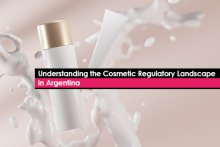The stringent regulatory guidelines, uncompromising regulatory spectrum and need of high-quality clinical documentation for submission to authorities have made the regulatory medical writers an important cog in the wheel for regulatory service providers and CROs. In most of the companies and CROs medical writers work as part of cross function teams with clinical trial management, data management, scientific specialists and regulatory affairs. Medical Writers have to be trained on sourcing latest global regulatory updates, planning and understanding statistical outputs from overall clinical research process and presenting it in the regulatory documents in a clear and unbiased manner. Medical writers must abide by client requirements, preferences, and expectations to ensure compliance with documentation and deliver excellence in all the steps right from the document development to the submission process.
Need of High-quality Documents
Document preparation is one of the most important yet intricate processes for regulatory submissions. It is very simple to understand the importance of quality documentation: The better the quality, the quicker are the approvals. This is why companies involve highly skilled regulatory medical writers in every step of data analysis that involves writing Protocols, Clinical Study Reports (CSRs), Narratives, Safety Update Reports, Investigator Brochure (IB), New Drug Application Submissions and other documents as per CTD or eCTD.
A medical writer stands to be an additional strength for companies and CROs because of their capabilities to analyze the clinical data and interpret it appropriately to summarize the statistical conclusions. Medical writers are capable of taking up the writing task from the clinical team and quickly process and analyze that information by implementing solutions to accelerate the document development process, allowing to speed up the entire drug development process.
Identifying the Client Requirements
To be able to understand the client requirements, medical writers must follow basic end to end process steps, basically starting with a kick-off meeting. It is wise to first conduct a project team meeting, ensuring medical writers’ presence, to check that everyone in the team is on the same page with regard to client requirements. Such practices help to avoid any potential gaps in theflow of information among the members.
Key Points to be included in the MOM Agenda
In fact even before getting started with the writing process, client expectations should be discussed and documented in terms of:
Project SPOC:
The client single point of contact who would act and coordinate with the study team on for queries/concerns.
People:
List of important stakeholders including the line functions which they represent, whether they are reviewers or approvers (signatories) for their specific line functions with the tentative dates of their availability for this project.
Content:
Specific therapy or product specific content creation style should be transitioned from the client to the medical writer. An example of the previously written document can be of great help.
Details of sections which would receive inputs from the client team should be listed. The number of incremental drafts required to be shared for review should be enquired. The client Preference of having the synopsis, references and abbreviations in the initial versions should be understood.
Timelines
In a similar manner, the respective timelines should also be discussed with the client:
- Database lock or data cut-off date, as applicable
- End date for availability of finalized source documents
- End of providing final draft
- Turnaround time for the review cycles
- Date of final deliverable as expected by the client
In Conclusion
Medical writers play a significant role because of their capabilities to analyze the clinical data and construe it appropriately to summarize the statistical conclusions. As the last runner in the relay race holds the key to team’s success, it is amedical writer who runs the last mile in the journey of drug development and it is his/ her skills which make all the difference. However it ismust for them to have a strong understanding of client requirements at all times during the process to achieve the goal.





